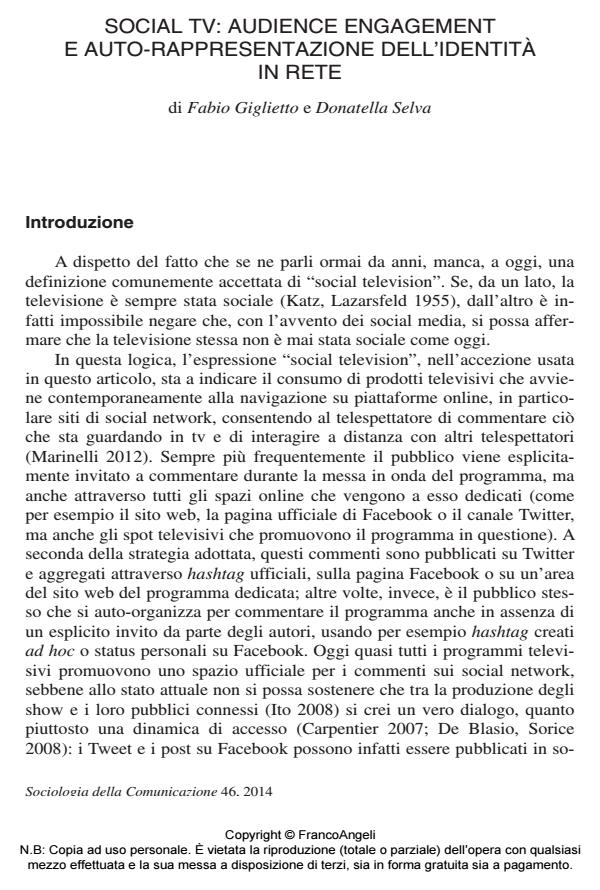Social Tv: Audience Engagement and Online Representation of Selfidentity
Journal title SOCIOLOGIA DELLA COMUNICAZIONE
Author/s Fabio Giglietto, Donatella Selva
Publishing Year 2014 Issue 2013/46
Language Italian Pages 23 P. 51-73 File size 1246 KB
DOI 10.3280/SC2013-046005
DOI is like a bar code for intellectual property: to have more infomation
click here
Below, you can see the article first page
If you want to buy this article in PDF format, you can do it, following the instructions to buy download credits

FrancoAngeli is member of Publishers International Linking Association, Inc (PILA), a not-for-profit association which run the CrossRef service enabling links to and from online scholarly content.
Social tv can be defined as a process of television consumption in which a public discursive space is created on and offline. In this public space, the representation of politics in television encounter the self-representation repertoire of networked publics, following various degrees of engagement and various expressive typologies. By combining quantitative and qualitative methods, this study highlights trends in using Twitter for social tv activities. Furthermore, we found a strict synergy among times and expressive repertoires by television and networked publics.
Keywords: Social tv, audience engagement, identity, tv and politics, networked publics
Fabio Giglietto, Donatella Selva, Social tv: audience engagement e auto-rappresentazione dell’identità in rete in "SOCIOLOGIA DELLA COMUNICAZIONE " 46/2013, pp 51-73, DOI: 10.3280/SC2013-046005